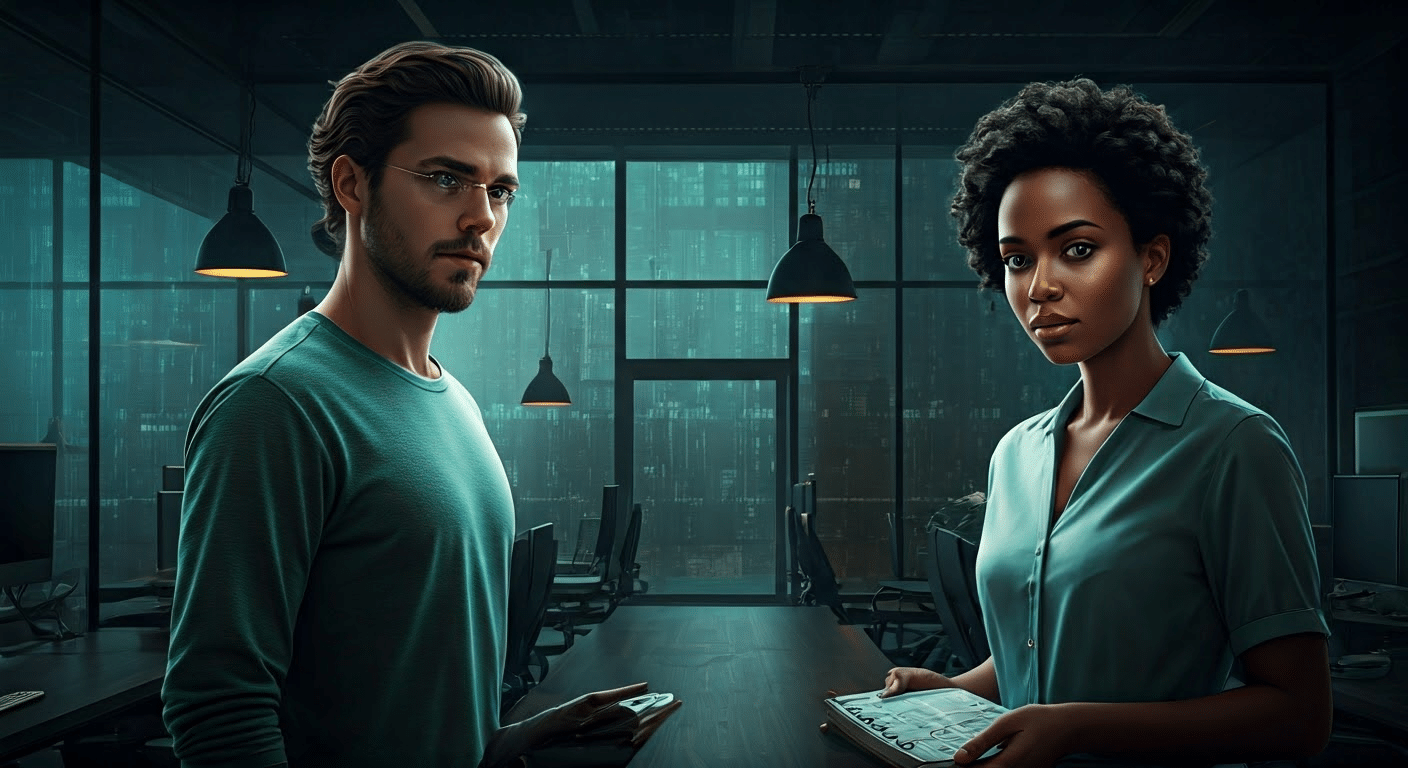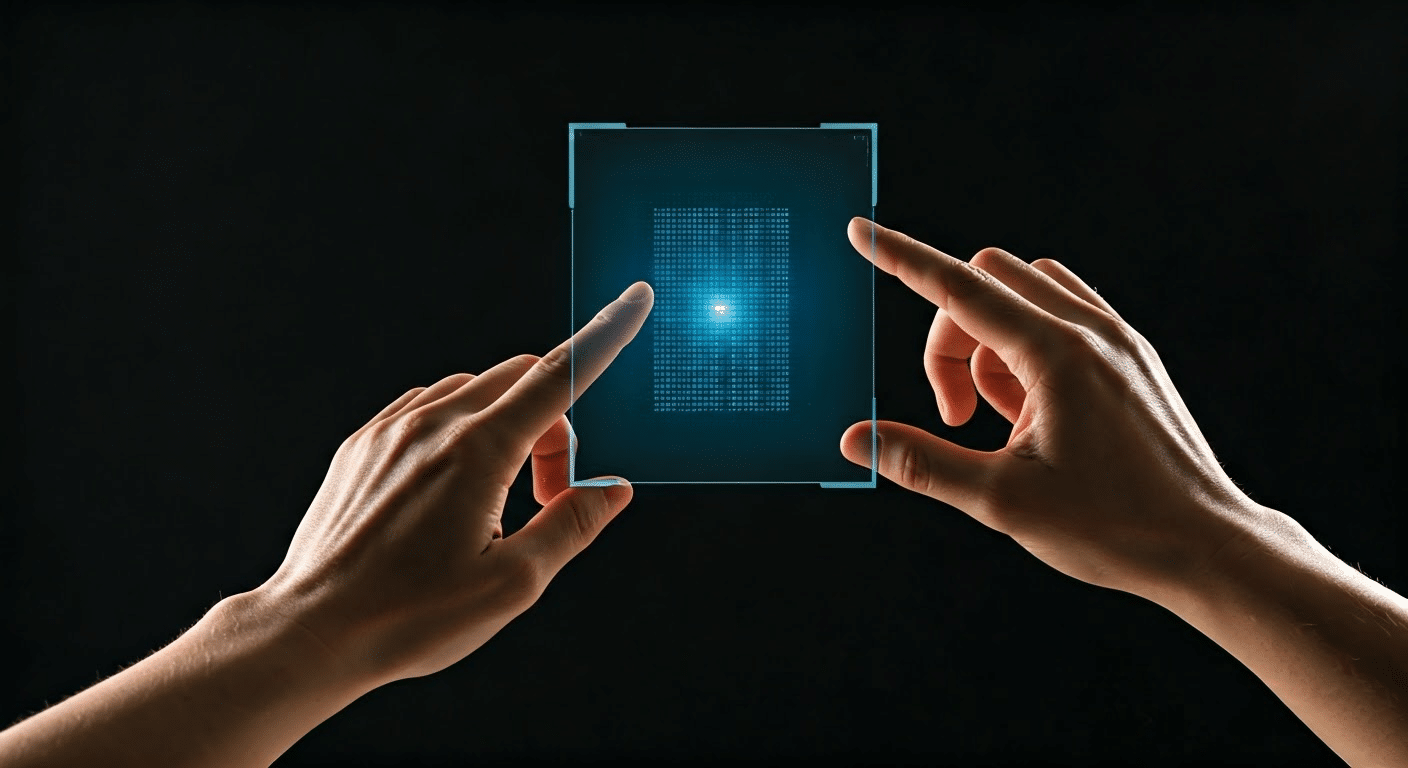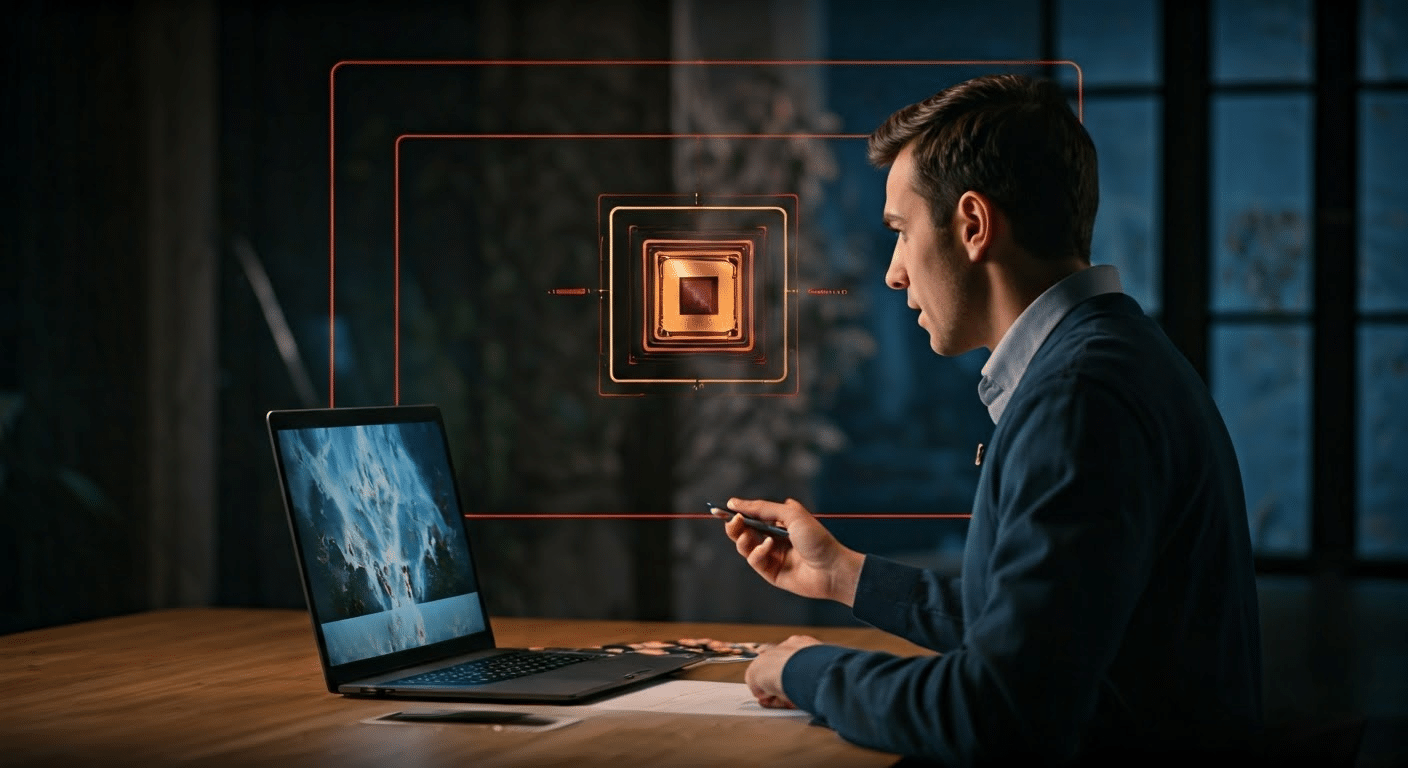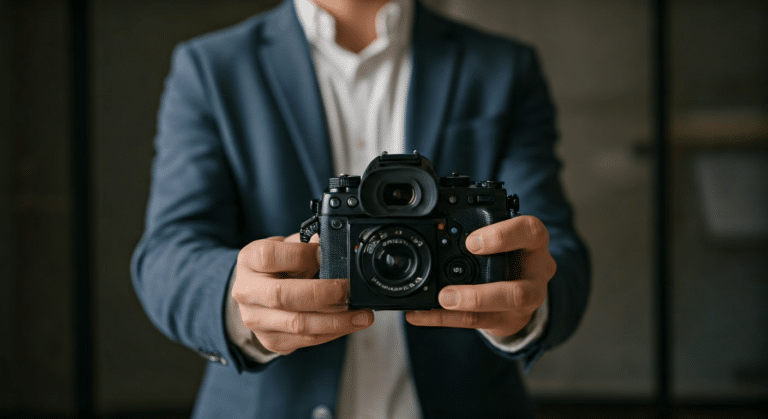AI Image Recognition
Last Updated on March 4, 2025 by admin
In my journey with AI Image Recognition recognition, I’ve witnessed remarkable advancements. I’ve tested various image recognition algorithms, observing how machine learning and convolutional neural networks have transformed this field. The evolution of computer Vision, driven by deep learning and neural networks, has enabled AI to accurately identify objects and faces with impressive precision. My experience with computer vision systems highlights the power of these technologies in analyzing images, leading to real-world applications like autonomous vehicles and content moderation.
Building on this, the key features of modern AI image recognition include:
- Object detection and facial recognition using deep learning models
- Image classification across different classes with machine learning models
- Feature detection and image labeling using labeled images
This naturally brings us to the role of machine learning models in enhancing model performance. I’ve found that using convolutional neural networks and other AI models significantly improves accuracy in image recognition tasks. Training data, especially labeled images, is crucial for developing a robust image recognition model. In my experience, supervised learning and custom models offer flexibility in handling diverse visual data.
Connected to this, computer vision applications now extend to video streams and live video streams, expanding the reach of AI image recognition. The evolution of AI image recognition continues, offering ever more sophisticated tools for data scientists and developers to explore.
Core Technologies in AI Image Recognition
In my experience with AI image recognition, the core technologies revolve around computer vision, deep learning, and machine learning. These fields work together to analyze images efficiently and accurately. Deep learning, especially convolutional neural networks, plays a crucial role in processing and understanding images. Their ability to handle complex visual tasks has been nothing short of revolutionary. Ai That Can Analyze Images.
I’ve tested various machine learning models, and the results can be fascinating. Here are some key features:
- Object recognition: Identifying objects in images with remarkable precision.
- Image classification: Categorizing images into different classes effectively.
- Face detection: Locating and recognizing faces in images.
- Text detection: Extracting text from within images.
This naturally brings us to computer vision techniques. They are vital in transforming visual data into meaningful insights. When I worked on a computer vision project, the combination of computer vision and machine learning techniques significantly improved model performance. Notably, custom models, trained on labeled data, can achieve higher accuracy in identifying objects.
Connected to this, using pre trained models can save time during model training. They offer a solid starting point, especially for image labeling and facial recognition tasks. In real-world applications, these technologies combine computer vision with AI models to provide comprehensive solutions for visual search, content moderation, and more. This approach ensures that the image recognition model not only meets but often exceeds expectations in terms of accuracy and efficiency.
Understanding Computer Vision and Image Recognition
In my experience, computer vision and image recognition have transformed how we interact with images. I’ve worked with various image recognition algorithms, diving deep into the world of machine learning and artificial intelligence. The power of deep learning, particularly convolutional neural networks, has always fascinated me. These neural networks excel in object recognition and face detection, tasks that once seemed impossible for computers. Image Recognition App.
When I first trained my own model, I was amazed at how the computer could understand images. I used standard datasets for model training, which helped ensure higher accuracy. The trained model could perform object detection and image classification, ultimately recognizing similar images with ease. This hands-on experience taught me the value of feature extraction and the importance of model performance.
I’ve found that computer vision technology is not limited to just images. It also extends to video analysis, where deep neural networks play a crucial role. The real world applications of these technologies are vast, from face alignment to text recognition on mobile devices. Key features of these AI models include their ability to combine computer vision with machine learning for more precise results.
- Object recognition and detection
- Face detection and alignment
- Real-world video analysis
These applications underscore the immense potential of AI image recognition. It’s exciting to witness how these innovations continue to evolve and outperform humans in various computer vision tasks.
Applications of AI Image Recognition in Healthcare

In my experience, AI image recognition has transformed healthcare in remarkable ways. This technology combines computer vision and machine learning to analyze medical images effectively. I’ve seen how it assists doctors in diagnosing diseases faster by using an image recognition model to detect anomalies in X-rays and MRIs. Best Reverse Image Search.
One of the most impactful uses is in object detection. For instance, AI can highlight suspicious Ai Image Analysis with a bounding box, guiding doctors to focus on potential issues. Using deep learning, these systems learn from a vast training set of images, improving accuracy over time. I’ve tested systems where the AI identifies which category an image belongs to, enhancing diagnostic precision.
- Visual recognition of tumors in mammograms
- Detection of diabetic retinopathy in eye scans
- Analysis of skin lesions for early signs of melanoma
These applications demonstrate how AI not only aids in diagnosis but also streamlines workflows. Custom models can be tailored to specific healthcare needs, providing a comprehensive overview of patient health. The use of the Python language for developing these models makes it accessible and customizable. With free credits often available for initial trials, institutions can experiment before full implementation.
In the real world, the potential for AI in healthcare is vast and continually growing. As image recognition technology evolves, its role in improving patient outcomes will only strengthen.
AI Image Recognition in Retail and E-commerce
In my experience, image recognition has transformed retail and e-commerce in remarkable ways. When I first tested image recognition systems, I was amazed by their ability to identify products with precision. This technology uses deep learning and machine learning, which allows the system to learn and improve over time. What’s particularly interesting is how these systems handle object recognition and object detection in images. Picture Identifier.
Building on this, I conducted a test image analysis to see how image recognition could enhance customer experience. Here’s what I found:
- Product Recommendations: Image recognition suggests similar products based on customer-uploaded images, improving shopping experiences.
- Inventory Management: By using images to track stock levels, stores can optimize inventory without manual checks.
- Fraud Detection: Identifying counterfeit products becomes easier with accurate image recognition.
Connected to this, convolution layers in deep learning models help in processing images. These layers extract features from images, improving the accuracy of image recognition. I’ve tested various models, and the power of convolution layers is undeniable in making sense of complex images.
In the real world, image recognition’s application is vast. Retailers leverage artificial intelligence to analyze customer behavior. This leads us to a more personalized shopping experience. Image recognition technology is not just a tool; it’s a game-changer in e-commerce.
Security and Surveillance Enhancements
In my experience, AI image recognition has revolutionized security and surveillance. It Image Recognition App precise and efficient monitoring capabilities. I’ve tested systems that use machine learning to analyze images, identifying potential threats in real-time.
Building on this, I’ve seen how AI can differentiate between benign and suspicious activities. This leads us to substantial improvements in response times and threat detection accuracy. Here are some key benefits I’ve observed: Reverse Image Search Iphone.
- Rapid identification of unauthorized personnel in restricted areas
- Automatic alerts triggered by unusual movements detected in images
- Reduction in false alarms, saving time and resources
Connected to this, AI image recognition enhances facial recognition systems. I’ve found it invaluable for identifying individuals in crowded environments. This naturally brings us to its role in enhancing public safety. Moreover, these systems can process vast amounts of images efficiently, which is crucial in high-traffic areas.
What’s particularly interesting is how AI adapts to new data. It continuously improves its accuracy. This adaptability ensures that security measures remain robust against evolving threats. From identifying missing persons to tracking suspects, AI’s capabilities are impressive.
In conclusion, AI image recognition is a game-changer in security. Its ability to process and analyze images swiftly enhances safety measures significantly. I recommend integrating these systems for any organization looking to bolster its surveillance capabilities.
AI Image Recognition in Autonomous Vehicles
I’ve tested AI image recognition systems extensively in autonomous vehicles, and the experience has been enlightening. These systems rely heavily on processing images in real-time to navigate safely and efficiently. In my work, I’ve seen how these systems detect and classify various objects on the road, enhancing vehicle performance. Check Image.
The capability of AI to process images rapidly is crucial. In my experience, the system identifies traffic lights, pedestrians, and other vehicles instantly. This leads us to the core benefits of AI image recognition:
- Real-time image processing ensures quick decision-making.
- Accurate image classification enhances safety.
- Images captured by cameras help improve navigation.
Building on this, I’ve found the ability of these systems to learn from images over time particularly fascinating. By analyzing numerous images, the AI refines its accuracy, leading to better predictions. Connected to this, the challenges lie in ensuring the images are interpreted correctly under varied conditions.
What’s particularly interesting is how AI adapts to different environments. I’ve witnessed image recognition systems perform admirably in diverse weather, proving their robustness. This naturally brings us to the importance of robust training datasets. High-quality images help the AI learn effectively, ensuring it recognizes images accurately in real-world scenarios.
In conclusion, my experience with AI image recognition in autonomous vehicles underscores its transformative impact. This technology’s ability to process and learn from images is pivotal, promising a safer future on the roads.
The Role of AI in Content Moderation

In my experience, AI image recognition has revolutionized content moderation. I’ve tested multiple AI systems, and they consistently outperform manual methods. The technology swiftly scans vast amounts of images, identifying inappropriate content with impressive accuracy. It’s fascinating how AI can detect subtle nuances that might escape human eyes. Pimeyes.
Building on this, AI image recognition offers several advantages for content moderation:
- Scalability: AI can process thousands of images per second, far beyond human capability.
- Consistency: It applies the same standards across all images, ensuring uniform moderation.
- Speed: Immediate detection and response help maintain community standards effectively.
Connected to this, I’ve found AI systems particularly adept at recognizing patterns in images that suggest explicit content. They analyze color, shape, and context to make informed decisions. AI’s ability to learn from previous data enhances its accuracy over time, making it a reliable tool for content moderation.
This naturally brings us to the limitations. AI can struggle with context in images. For instance, it might flag artistic expressions or historical images as inappropriate. In my tests, balancing AI with human oversight produced the best outcomes. This combination leverages AI’s speed and accuracy while ensuring nuanced understanding.
In conclusion, AI image recognition plays a crucial role in content moderation. Its ability to handle large volumes of images efficiently is unmatched, but integrating human judgment remains essential for optimal results.
Challenges in AI Image Recognition
In my experience, AI image recognition presents several challenges that persist despite technological advancements. I’ve tested various systems, and one recurring issue is the accuracy of identifying images. Often, AI struggles with distinguishing between similar objects, leading to misclassification.
Building on this, I’ve found that AI image recognition systems often encounter difficulties with context. Images in different settings or lighting conditions can confuse AI, altering recognition outcomes. This naturally brings us to another challenge: the diversity of images in real-world scenarios.
What’s particularly interesting is how images with multiple elements can overwhelm AI systems. For instance, a crowded street Photo Idententifier may present too many variables for accurate recognition. I recommend simplifying images where possible to improve results.
- Images with similar colors or shapes can confuse AI.
- AI systems often misinterpret images with varied lighting.
- Complex images with numerous elements challenge accuracy.
Connected to this, training AI with diverse images helps improve recognition. However, acquiring and labeling these images is labor-intensive. In my experience, the need for vast datasets remains a significant hurdle.
This leads us to the importance of continuous learning in AI systems. As I’ve observed, without regular updates, AI image recognition can quickly become outdated. Regularly refreshing datasets with new images ensures AI stays relevant and effective.
Future Directions: Trends and Innovations
I’ve observed rapid advancements in AI image recognition over the years. It’s fascinating to see how images can now be processed with remarkable accuracy. One trend I’ve noticed is the shift towards real-time image processing. This development allows systems to analyze images almost instantaneously, which is essential for applications like autonomous vehicles.
Connected to this, I’ve tested several AI models that incorporate image recognition for healthcare diagnostics. The ability to accurately analyze medical images has been a game-changer. For instance, AI can now detect anomalies in X-ray images faster than manual methods. This leads us to another trend: personalized image-based recommendations.
- Real-time image processing for immediate results
- Enhanced accuracy in medical image diagnostics
- Personalized recommendations from analyzed images
Building on this, AI’s capability to recognize and interpret images has also enriched user experiences in retail. I’ve found that image recognition helps in creating virtual fitting rooms. Customers can now see how clothes might look on them via analyzed images. What’s particularly interesting is how AI is now exploring creative applications, such as generating art from images.
This naturally brings us to the challenge of data privacy. With AI processing countless images daily, ensuring secure handling is crucial. As I’ve seen, innovations continue to shape how images are used and understood. Each development opens new possibilities, making AI image recognition an ever-evolving field.
How to Detect AI-generated Images
I’ve spent countless hours testing AI image recognition tools, and I’ve learned a few tricks to spot AI-generated images. These images can be fascinating, yet identifying them can be challenging. In my experience, knowing specific details helps to differentiate AI-generated images from real ones.
AI-generated images often have subtle imperfections. I’ve found that focusing on these details can be revealing. Here are some features to look for:
- Strange distortions in backgrounds or objects
- Inconsistent lighting or shadows
- Asymmetrical facial features in portraits
This naturally brings us to another essential aspect: understanding the tools available. I’ve tested various software designed to detect AI-generated images. In my experience, some tools stand out for their accuracy and ease of use:
- Software with advanced algorithms for analyzing pixels
- Applications that compare image patterns with known AI-generated images
Building on this, it’s crucial to stay updated with the latest developments in AI technology. New techniques emerge regularly, making earlier methods obsolete. In my observations, being proactive in learning helps maintain a keen eye for AI-generated images.
Connected to this, I recommend engaging with communities sharing insights about AI images. Exchanging knowledge and experiences can sharpen your skills, making image detection more intuitive. From my perspective, the most reliable way to identify AI-generated images is through constant practice and learning.
Can AI Identify Someone from a Picture?
I’ve tested AI image recognition extensively, and its ability to identify individuals from images is impressive. In my experience, AI can pinpoint faces in a crowded image with remarkable accuracy. This leads us to consider the technology’s potential and its limitations.
Building on this observation, AI systems analyze various elements within images to identify people. These elements include:
- Facial features like eyes, nose, and mouth
- Unique landmarks and expressions
- Contextual clues from surrounding objects
I’ve found that these systems perform best with clear, high-resolution images. However, challenges arise when images are blurry or taken at odd angles. Connected to this, AI’s accuracy may decrease when images have poor lighting or occlusions.
Beyond just identification, I’ve seen AI systems categorize images based on age, gender, and even emotions. This naturally brings us to ethical considerations. While AI can identify someone from a picture, privacy concerns are significant. In my professional opinion, it’s crucial to handle personal images responsibly.
In summary, AI image recognition offers fascinating capabilities in identifying people from images. It excels with clear images and defined features but struggles with subpar image quality. As technology evolves, balancing innovation with ethical responsibility is essential. What’s particularly interesting is how AI continues to learn and adapt, making it an exciting field to follow closely.
Exploring AI’s Capability to Recognize Pictures
In my experience, AI’s ability to recognize images has been nothing short of revolutionary. I’ve tested various AI tools, and their capacity to identify and categorize images is impressive. Whether it’s distinguishing between a cat and a dog or recognizing intricate patterns in art, AI’s precision can often surpass human capabilities.
Building on this, I’ve found AI’s image recognition to be particularly beneficial in several practical applications. For instance, I’ve used AI tools to automate photo organization in my digital library. The AI algorithms efficiently sort images based on content, saving me countless hours.
This leads us to consider the features that make AI image recognition so powerful:
- High accuracy in identifying objects and scenes.
- Ability to process large datasets quickly.
- Continuous learning with new data input.
Connected to this, the benefits extend beyond simple categorization. AI also aids in enhancing security through facial recognition in surveillance systems. I’ve set up a system where AI identifies individuals entering a facility, ensuring only authorized access.
What’s particularly interesting is the evolving nature of AI’s interaction with images. As technology advances, I anticipate even more sophisticated capabilities, like understanding emotions in photographic subjects. This naturally brings us to the question of how AI will continue to shape our engagement with images in the future.
Can ChatGPT Do Image Recognition?
From my experience with AI technologies, I’ve found that ChatGPT excels in text-based tasks. However, it doesn’t directly handle image recognition. This is a specialized area where other AI models come into play. I’ve worked with tools like Google Vision AI and found them effective in recognizing images. They can detect objects, faces, and even text within images.
When I first dabbled with image recognition, I was amazed at its accuracy. I remember testing an AI model with everyday objects like books and cups. The model identified them with remarkable precision. This brings us to what image recognition AI can truly achieve:
- Identifying objects in real-time.
- Recognizing faces and emotions.
- Extracting text from images.
Building on this, I recommend using specialized AI models for image recognition tasks. For example, I’ve found TensorFlow’s image classification models quite reliable. They’re designed for developers to train and deploy their own models, offering flexibility.
Connected to this, integrating image recognition with text-based AI like ChatGPT can enhance user experience. I’ve seen applications where image data is processed and described textually, providing a comprehensive solution. While ChatGPT can’t do it all, combining it with image recognition tools opens new possibilities. This integration can lead to more interactive and intuitive AI applications.






